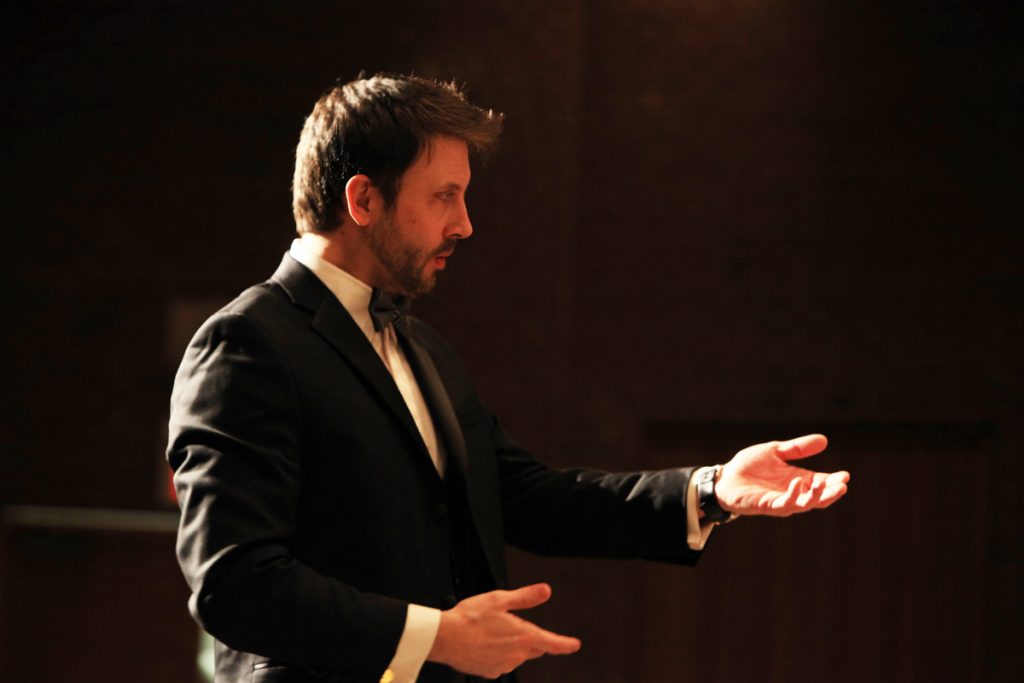
Photograph of San Francisco Opera music director Nicola Luisotti by Cory Weaver
CULTURE BEAT | PAMELA FEINSILBER
Maestro — and neighborhood resident — Nicola Luisotti opens the San Francisco Opera’s summer season this month, conducting eight performances of Verdi’s heart-wrenching Rigoletto.
Italian to his core, Luisotti, who’s been music director of the opera company since 2009, is particularly renowned for conducting the works of his most famous musical countrymen. He will open the fall season conducting Puccini’s beloved Turandot in early September and Verdi’s romantic La Traviata later that month.
But if not for the charms of the neighborhood, he might not be in San Francisco at all.
You’ve worked in opera companies all over the world. What brought you to San Francisco?
I will never forget that important moment of my artistic life. I was in L.A. in 2005 conducting Pagliacci, by Leoncavallo. I’d been invited to conduct La Forza del Destino, by Giuseppe Verdi, in San Francisco, and I had to start the rehearsals. But I was so tired, I was close to canceling my engagement.
I decided to come here for two days; my wife, Rita, remained in L.A. When I entered the apartment S.F. Opera had arranged for me in Pacific Heights, the windows provided a spectacular view of the bay and Alcatraz — a view I couldn’t have had in any other neighborhood. I immediately called Rita and said: “You will love this city!”
And it was one of the best musical experiences in my life. The S.F. Opera orchestra and chorus were just amazing. Four years later, when I was asked to become music director, I was in paradise.
And back in Pacific Heights.
I fell in love with what the neighborhood first gave me — that view. Our apartment building in Pacific Heights was built in 1932, and I thought it was truly fate, since that was the year the Opera House opened. And Pacific Heights is so quiet, beautiful and elegant — just a perfect place for a musician to be inspired.
You began your career at age 10, playing the organ in your village church in Tuscany, learning to read music by watching the priest — and a year later you were conducting the church chorus. How did you become an opera conductor?
The first time I attended an opera, it was Madama Butterfly, when I was 12. But the first time I fell in love with an opera was La Bohème, when I was 21. When I saw it, I understood that one day, I could become an opera conductor. For sure, a bit of talent, a lot of work and some luck can contribute to achievement. Perhaps being Italian is why many theaters ask me to conduct Italian works, and so it can be said that I bring my Italian traditions to the music.
What exactly does an opera conductor do?
My colleagues in the orchestra pit and on stage each knows his or her own role intimately. But the conductor brings his knowledge of the entire opera, acting almost like a medium, channeling the composer through the score. When everything works, we have magic.
What do you enjoy on your time off?
Rita and I love to cook and we do not eat out very often, although we have been many times, either on our own or with visiting friends and family, to Pizzeria Delfina. We walk all over Pacific Heights and shop at Sur La Table on Union, the Apple store and Lucca Deli on Chestnut, and go to Whole Foods on California several times a week. We love the services of Deluxe Cleaners on Laguna, and Rita attends Pilates classes at the Dailey Method in Cow Hollow. We bike from home to Crissy Field and beyond and like to hike in the Marin Headlands.
Alas, you’ll be moving on after next season. What are your plans?
I have just been named director asociado at the Teatro Real in Madrid. I will also conduct a lot in New York at the Met, and in Paris, London, Munich, Rome, Turin and many other places around the world.
What you will miss?
I will simply miss everything about this fantastic, charming city that gave me so much. But I will come back here as a guest, and sooner than expected. Remember that all who have lived in this city have left their hearts in San Francisco!
Filed under: Locals, Music | 2 Comments »














